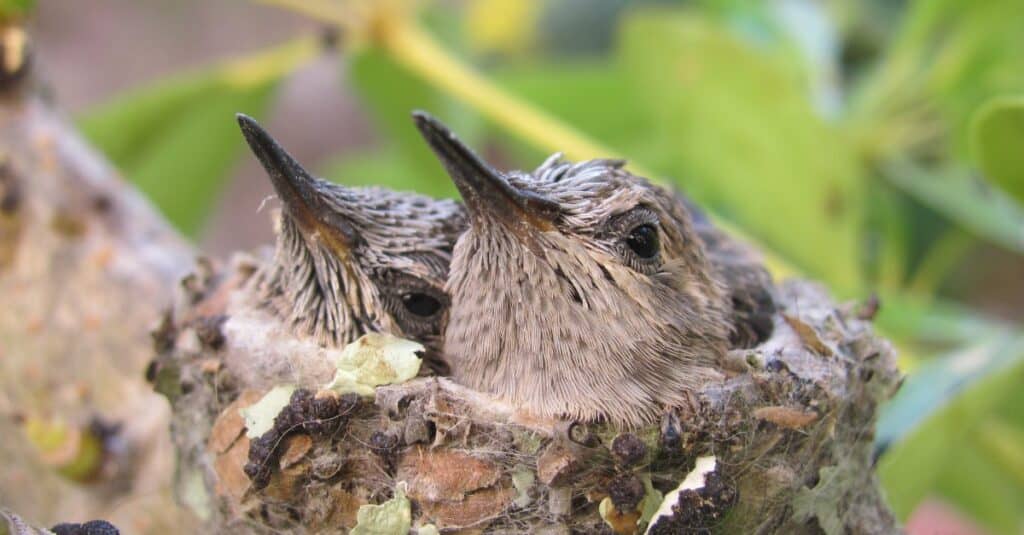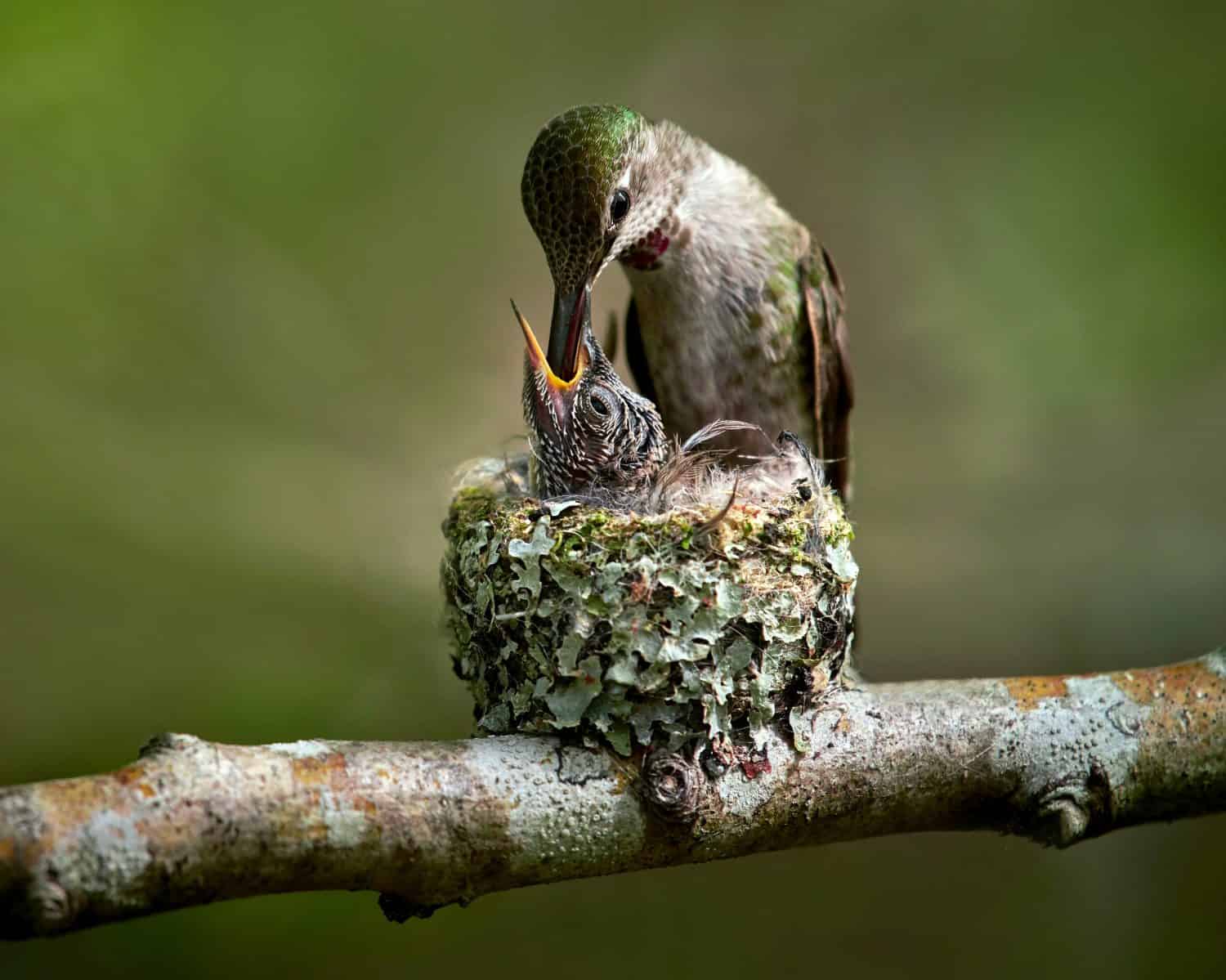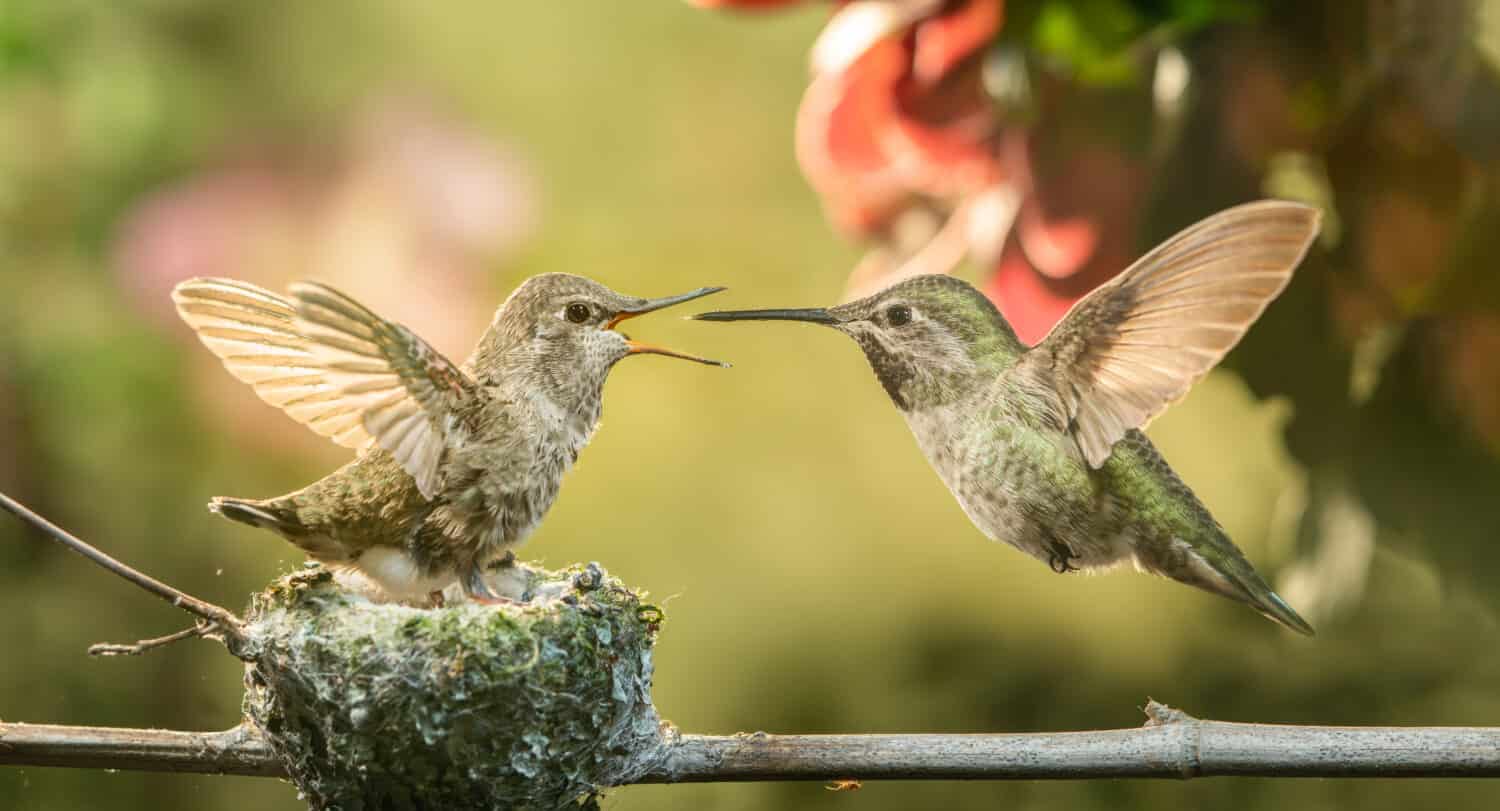The saying “big gifts come in small packages” is certainly the case when it comes to hummingbirds. The Hummingbird is the smallest bird in the world and yet the most unique. Often referred to as “flying jewels” by early Spanish explorers, these birds are inherently fascinating to watch, pursue, and study. People have long been fascinated with their gorgeous colors and amazing feats. Young hummers, in particular, showcase captivating behaviors as they undergo a remarkable journey from helpless chicks to fiesty fledglings. If you’ve ever been intrigued by these tiny, mysterious birds and want to learn more about how these birds grow from egg to fledgling or how long baby hummingbirds stay in their nest after they are born, this brief article will help you learn all about them.
Little Hummers: How They Are Born
The mating season for hummingbirds starts as early as December and runs through February. The ruby-throated hummingbird alone initiates mating in late March upon its return to the United States and Canada. Courtship starts with male hummingbirds putting on dazzling displays of their flying skills to win over the female. But, once the mating ritual is complete, the male and female typically go their separate ways. From thereon, the female hummingbird takes on the entire responsibility of building the nest and caring for the eggs and the young.
The female devotes up to a week to constructing her tiny, cup-shaped nest. Their distinctive nests are usually built from soft grass, cattail fluff, and shreds of leaves, bound together with spider webbing. The interior of the nest is lined with bird feathers, dandelion, cotton seeds, and other soft plant material to provide cushioning for the eggs. The outsides, on the other hand, are camouflaged with bits of moss and lichen to hide the nests from potential predators.
When the nest is finished, the female will lay her eggs. Female hummingbirds generally lay only two tiny white eggs and they are laid one at a time. The eggs are only about the size of a small jellybean and weigh no more than a gram. Once the eggs are laid, they are carefully tended to by the mother who spends most of her time keeping them warm. She may only occasionally leave the nest to feed on the nectar of nearby flowers. The hummingbird nestlings typically break out of their eggshells in approximately two to three weeks. Both the eggs will hatch around the same time, even if they were not laid on the same day.
What Do Baby Hummingbirds Look Like?

Baby hummingbirds are black in color and have no feathers when they are born.
©iStock.com/seeladyjane
Newly hatched baby hummingbirds are incredibly small, weighing only about 0.62 grams when they are born. That’s one-third the weight of the US dime, which is the smallest and thinnest of all coins in the United States. The babies are born naked with almost no feathers and their skin color varies from dark gray to pink. They are born with their eyes closed and cannot regulate their own body heat during the first few days. The mothers, as a result, spend most of their days sitting by the babies to keep them warm. She also has the important job of feeding the chicks. Feeding and raising the hungry nestlings is quite a daunting job for the mother.
What Do Baby Hummingbirds Eat?

Mothers will feed their babies until they are strong enough to fly on their own and forage for nectar.
©ukrit.wa/Shutterstock.com
Baby hummingbirds require a high protein diet and require more than just sweet-tasting nectar. They feed on insects such as aphids, ants, gnats, beetles, mosquitoes, and sometimes even insect larvae and eggs. They are also almost always eating and need food every 15 to 20 minutes. The mother, therefore, may have to leave her nest up to 200 times a day to collect food for them. Mothers collect insects and nectar in the part of their throat called the ‘crop’. This thin food reservoir is where food is temporarily stored to feed the young. It softens the food and ensures that the nestlings can easily eat it.
When a mother returns to her nest after collecting food, she will stick her long bill deep into each of her little baby’s throats to inject a portion of the softened food from her crop. She may have to repeat this process several times a day to ensure that the nestlings receive adequate nourishment.
How Long Do Baby Hummingbirds Stay in the Nest?

The hummingbird’s nest is just over an inch in size and can begin to appear crowded as the chicks develop into fledglings.
©RobDemPhoto/Shutterstock.com
About 16 days after they are born, the little hummingbird chicks grow feathers and open their eyes. They are now called ‘fledglings’ and start training to fly and feed on their own. After they’ve learned to fly, the fledglings will stay with their mother for a little longer (approximately seven days). The young hummingbirds are usually ready to take off from their nest when they are about a month old. Some tropical species of hummingbirds may stay in their nests for longer and may only take off after two months. They are typically ready to fly south and live on their own by early fall.
How Long Do Hummingbirds Live?
Most hummingbirds only have a short life span of up to three to five years in the wild. When kept in captivity, however, these birds may live considerably longer and may survive for up to 13 to 14 years. Unfortunately, it is illegal to keep hummingbirds in captivity in the United States. Only zoos and other authorized institutions can keep these birds in captivity. Even just having a hummingbird nest or its feathers in your possession is illegal and, therefore, if you ever find an injured hummer or a baby, you should reach out to your local wildlife rehabilitation center or a veterinarian for help rather than attempting to treat the bird yourself.
Thank you for reading! Have some feedback for us? Contact the AZ Animals editorial team.








